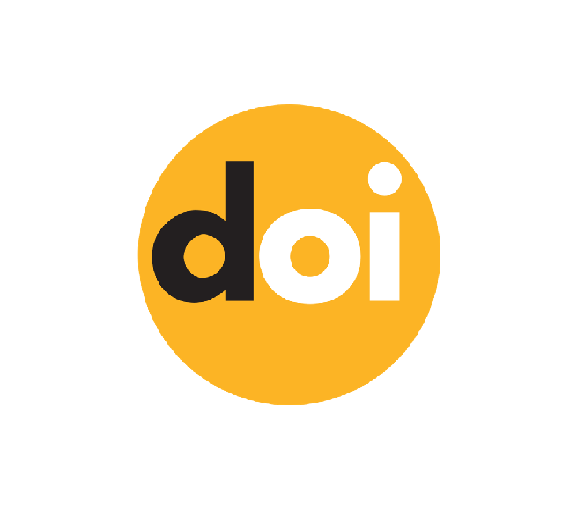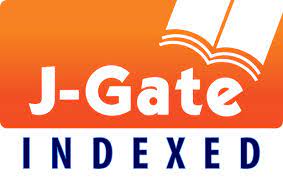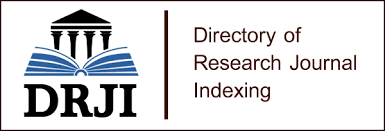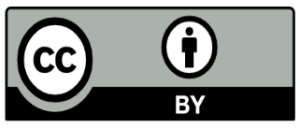THE INTEGRATION OF TECHNOLOGICAL RESOURCES IN THE EFL CLASSROOM: A HOLISTIC REVIEW
Abstract
By large, recent evidence suggests that modern technologies, and their extensions, have found their way to the heart of people from all walks of life around the globe. Being all the rage now, the widespread, and even rampant at times, use of Information Communication Technologies have changed the face of countless domains. The purpose of this paper is to review recent research on the necessary characteristics that facilitate integrating technology resources in their classrooms as a meaningful pedagogical tool and purports the demand to inculcate a technology-friendly organizational culture in schools worldwide.
References
Albion, P. (2001). Some factors in the development of self-efficacy beliefs for computer use among teacher education students. Association for the Advancement of Computing in Education (AACE)http://www.usq.edu.au/users/albion/papers/site01.
Ashton, P. T., & Webb, R. B. (1986). Making a difference: Teachers’ sense of efficacy and student achievement. New York: Longman. Bandura, A. (1995). Self-efficacy beliefs in human functioning. In Social foundations of thought and action, 1986. http://www.emory.edu/EDUCATION.
Bandura, A. (1997). Self-efficacy. In Harvard Mental Health Letter, 13(9), 4–5.
Benson, S. (2004). Computer anxiety: Impediment to technology integration? http://pt3.nmsu.edu/research/Benson.html.
Bong, M., & Skaalvik, E. (2003). Academic self-concept and self-efficacy: How different are they really?. Educational Psychology Review 15(1).
Blascovich, J., & Tomaka, J. (1991). Measures of self-esteem. In J. P. Robinson, P. R. Shaver, & L. S. Wrightsman (Eds.). Measures of personality and social psychological attitudes (Vol. I). San Diego, CA: Academic Press.
Compeau, D., & Higgins, C. (1995). Computer self-efficacy: Development of a measure and initial test. http://www.misq.org.
Gist, M. E., Schwoerer, C., & Rosen, B. (1989). Effects of alternative training methods on self-efficacy and performance in computer software training. Journal of Applied Psychology, 74(6), 884–891.
Hoy, W. K., & Miskel, C. G. (2001). Educational administration. Theory, research and practice (6th ed.). New York: Mc Graw-Hill.
Huitt, W. (1998). Self-concept and self-esteem. http://chiron.valdosta.edu/whuitt/ï¬les/selfconc.html.
Hsioung, Yu-Lu. (2002). Preservice teacher preparation to integrate technology and mathematics. Review of Literature.
Karsten, R., & Roth, R. (1998). Computer self-efficacy: A practical indicator of student computer competency in introductory IS courses. Informing Science, 3.
Khorrami-Arani, O. (2001). Researching computer self-efficacy. International Education Journal, 2(4). Educational research conference 2001 Special Issue. http://www.flinders.edu.au/education/iej.
Koliadis, E. (1997). Learning Theories and Educational Act. Volumes B and C. Athens.
Looney, C., Valacich, J., & Akbulut, A. (2004). Online investment self-efficacy: Development and initial test of an instrument to assess perceived online investing abilities. In Proceedings of the 37th Hawaii international conference on system sciences. http:// csdl2.computer.org/comp/proceedings/hicss/2004/2056/07/205670184b.pdf.
Murphy, C. A., Coover, D., & Owen, S. V. (1989). Development and validation of the computer self-efficacy scale. Educational and Psychological Measurement, 49, 893–899.
Pajares, F., & Schunk, D. (2001). Self-beliefs and school success: Self-efficacy, self-concept and school achievement. In R. Riding & S.
Rayner (Eds.), Perception (pp. 239–266). London: JAI presshttp://www.emory.edu/EDUCATION/mfp/.
Phillips, B. (1997). A critical analysis of recent studies of computers in education. http://www.geocities.com/Athens/Oracle/8314/ 5p92qual.htm.
Rogers, A. (1999). Adult education. Metechmio Publications, in Greek.
Ropp, M. (1999). Exploring individual characteristics associated with learning to use computers in preservice teacher preparation. Journal of Research on Computing in Education, 31(4), 402–424http://www.educ.mcu.edu/homepages/ropp/Dissertation.
Rosenberg (1965). Self-esteem scale. http://www.bsos.umd.edu/socy/grad/socpsy_rosenberg.html.
Roussos, P. (2002). Computer attitude correlates: Do they tell us anything new? http://psychology.uindy.gr/ICTE_paper_Roussos.pdf. Scholl, R., Beauvais, L. & Leonard, N. (1995). A self concept-based model of work motivation, 1995 Annual Meeting of the Academy of Management. http://www.cba.uri.edu/Scholl/Papers/Self_Concept_Motivation.html.
Software and Information Industry Association, (2000). Research report on the effectiveness of technology in schools.
Sommerfelf, M. & Watson, C. (2000). Academic self-efficacy and self-concept: Differential impact on performance expectations. http:// www.stanford.edu/group/CRE/motivation.html.
Schwarzer, R. & Jerusalem, M. (1993). The general self-efficacy scale (GSE) in http://userpage.fuberlin.de/~health/engscal.htm.
Schwarzer, R., & Jerusalem, M. (2000). Generalized self-efficacy scale. http://www.fu-berlin.de/gesund/skalen/procop_engl.htm. Tschannen-Moran, M., Woolfolk Hoy, A., & Hoy, W. K. (1998). Teacher efficacy: Its Meaning and measure. Review of Educational Research, 68(2), 202–248.
Tschannen-Moran, M., & Woolfolk Hoy, A. (2001). Teacher efficacy: Capturing an elusive construct. In Teaching and teacher education,17, 783–805.
United States Congress Office of Technology Assessment, OTA, 1988, 1995 and the U.S. Department of Education’s Office of Educational Research and Improvement, OERI, 1993.
Published
How to Cite
Issue
Section
License
Copyrights for articles published in Journal of Asian and African Social Science and Humanities are retained by the authors, with first publication rights granted to the journal. The journal/publisher is not responsible for subsequent uses of the work. It is the author's responsibility to bring an infringement action if so desired by the author.
Articles published in Journal of Asian and African Social Science and Humanities are published under the Creative Commons Attribution (CC-BY) license, which permits others to distribute, remix, tweak, and build upon your work as long as they credit you for the original creation.
Â














